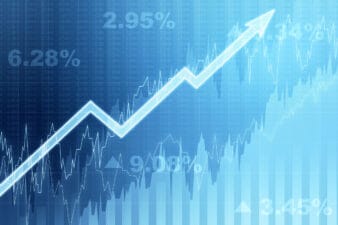Retirement planning is always important. But for Canadian seniors, it becomes a whole lot more in focus. That focus, however, may not exactly come with more clarity about how much you should have saved in retirement.
So, when it comes to those later years, whether you’re retired or now, how do you stand up to the average? And what’s more, how can you increase your retirement income safely to live out your retirement years with plenty of cash on hand?
What’s the average?
As of the most recent information from Statistics Canada, the average Canadian senior family made $69,900 in 2021. When looking at a single senior, that dropped down to an average of $31,400. So, if you’re a senior couple, that means you would be bringing in $5,825 per month and $2,616 per month as an individual.
The question now, of course, is whether this is enough –especially during these times. There was an impact from several factors during 2021. This included COVID-19 and its impact on income. Furthermore, there was also a market income growth that led the way due to employment income recovering. Finally, there was a decrease in government transfers in 2021 that also impacted annual income.
So, to figure out what you would need to create more income, you also have to consider what you would need these days. It wouldn’t be unheard of to think that over $6,000 as a senior family would be necessary, given the increase in inflation. So, how does a retiree even get started?
Set it up
First off, retirees are going to want to meet with financial advisors to come up with a strategy on how to create enough income in retirement. This will likely first mean looking at all sources of income. Are you taking out Old Age Security (OAS), the Canadian Pension Plan (CPP), and your Registered Retirement Income Fund (RRIF)?
There are also other sources of income you may have or even want to consider setting up. This could include Guaranteed Investment Certificates (GICs), capital gains from your assets such as a home, and even business investments.
But another great opportunity comes from using your Tax-Free Savings Account (TFSA). Once you start taking cash out of your RRIF at age 70, you’ll want to have another way to invest. And the TFSA is perfect. There are no taxes, and you can take it all out at once if you so choose. So, let’s look at one option to consider as you age to increase that monthly amount.
Pick up a solid ETF
Exchange-traded funds (ETF) are perhaps the easiest way to increase your monthly cash flow. What’s more, they don’t take any upkeep! So, even if you end up with health issues, you don’t have to worry about your finances. This can be key if you’re living on your own with no family nearby.
An excellent option to consider is Vanguard Retirement Income ETF Portfolio (TSX:VRIF). This ETF holds a 30% mix of stocks with a 68% mix of bonds as of writing. This provides you with fixed income and a bit of growth from stocks. While growth in shares isn’t going to be absurdly high, dips won’t be low either. Shares are currently up 4.4% in the last year and 7.8% in the last three months alone!
Meanwhile, you’ll be bringing in a safe and steady dividend yield of 4.32% as of writing. And that income isn’t going anywhere, given the heavy investment in bonds. Then, you might want to consider making planned contributions over the next few years, along with planned withdrawals, when you enter retirement. Retirement can be wonderful but also stressful. So, by setting yourself up with these long-term strategies, you can enter it without a worry in the world.









